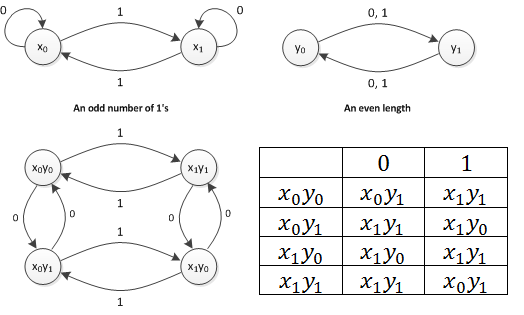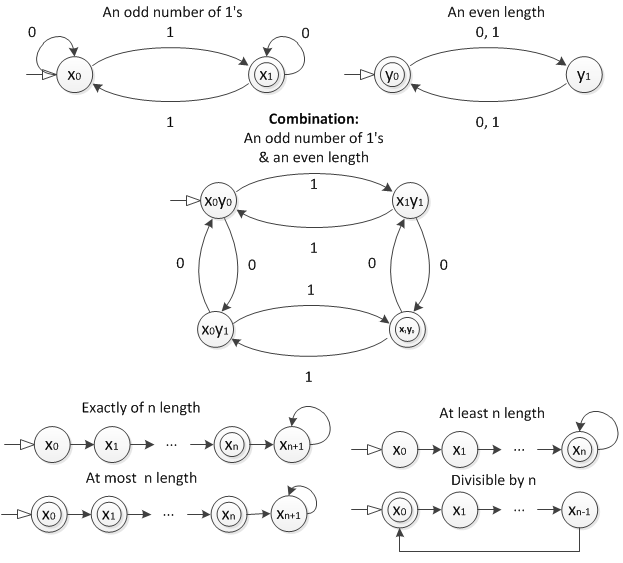I'm constructing a deterministic finite automata (DFA) for a language of all strings defined over $\{0,1\}$ whose length is even and number of $1$s is odd. I constructed each DFA separately and then combined:

- Is the given procedure for combining DFAs correct?
EDIT: Originally wrote union; actually taking the intersection. - Would someone suggest material on constructing DFAs
given restrictions on length and number of $0$s or $1$s?
According to link given by Merbs, I have developed this FA. 
This FA does not accept a language of even length.

